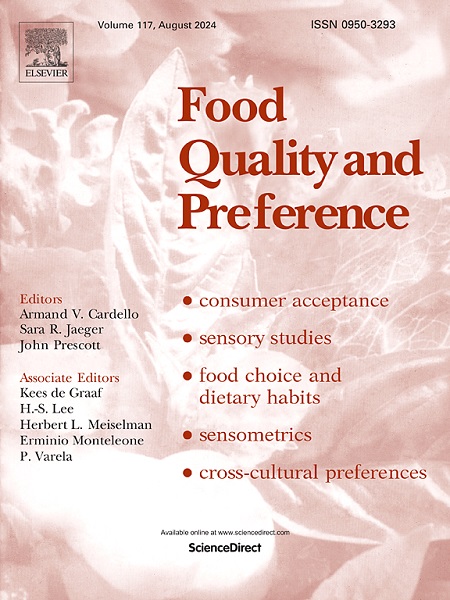Reducing food waste: The role of yogurt appearance and package information across consumer segments
IF 4.9
1区 农林科学
Q1 FOOD SCIENCE & TECHNOLOGY
引用次数: 0
Abstract
In recent years, the food industry has prioritized minimizing food waste and promoting sustainability. Surface whey is a common quality defect in yogurt that can occur during storage, but it does not necessarily indicate that yogurt is unfit for consumption.
This study aimed to investigate the impact of package information regarding surface whey, and yogurt appearance on consumers' willingness to consume (WTC) yogurt before and after the best-before date. First, two focus groups (n = 16) were performed to qualitatively explore consumers purchasing habits, general knowledge of quality defects in yogurts, and their behavior regarding food waste; the results were used to design a quantitative study. Norwegian consumers (n = 298) participated in an online survey. Consumers assessed their WTC, based on photos and videos of eight yogurt samples, in a conjoint test with a 3 × 2 factorial design.
Results revealed that date labels and yogurt appearance significantly influence consumers' WTC yogurts, while package information had no significant effect. Consumers were segmented based on safety and quality concerns; hierarchical clustering showed two clusters. One concerned cluster, characterized by higher safety- and quality concerns, showed lower WTC yogurt past its best-before date compared to a less concerned cluster.
The findings suggest that strategies to reduce food waste should prioritize encouraging companies to extend the shelf life of products and to reconsider any dates that might be overly cautious. Educating consumers about product quality beyond date labels rather than relying solely on package instructions, is also vital.

减少食物浪费:酸奶外观和包装信息在消费者群体中的作用
近年来,食品行业将减少食物浪费和促进可持续性作为首要任务。表面乳清是酸奶中常见的质量缺陷,可能发生在储存过程中,但这并不一定表明酸奶不适合食用。本研究旨在探讨酸奶包装信息对酸奶表面乳清的影响,以及酸奶外观对消费者在最佳食用日期前后消费酸奶的意愿的影响。首先,进行了两个焦点小组(n = 16),以定性地探讨消费者的购买习惯、对酸奶质量缺陷的一般认识以及他们对食物浪费的行为;结果用于设计定量研究。挪威消费者(n = 298)参与了一项在线调查。在一个3 × 2因子设计的联合测试中,消费者根据8个酸奶样品的照片和视频来评估他们的WTC。结果表明,日期标签和酸奶外观对消费者的WTC酸奶有显著影响,而包装信息对消费者的WTC酸奶没有显著影响。根据安全和质量问题对消费者进行细分;分层聚类显示两个聚类。一个受关注的集群,其特点是更高的安全和质量问题,显示较低的WTC酸奶超过最佳食用日期相比,不太关注的集群。研究结果表明,减少食物浪费的策略应该优先鼓励公司延长产品的保质期,并重新考虑任何可能过于谨慎的日期。对消费者进行日期标签以外的产品质量教育,而不是仅仅依靠包装说明,也至关重要。
本文章由计算机程序翻译,如有差异,请以英文原文为准。
求助全文
约1分钟内获得全文
求助全文
来源期刊

Food Quality and Preference
工程技术-食品科技
CiteScore
10.40
自引率
15.10%
发文量
263
审稿时长
38 days
期刊介绍:
Food Quality and Preference is a journal devoted to sensory, consumer and behavioural research in food and non-food products. It publishes original research, critical reviews, and short communications in sensory and consumer science, and sensometrics. In addition, the journal publishes special invited issues on important timely topics and from relevant conferences. These are aimed at bridging the gap between research and application, bringing together authors and readers in consumer and market research, sensory science, sensometrics and sensory evaluation, nutrition and food choice, as well as food research, product development and sensory quality assurance. Submissions to Food Quality and Preference are limited to papers that include some form of human measurement; papers that are limited to physical/chemical measures or the routine application of sensory, consumer or econometric analysis will not be considered unless they specifically make a novel scientific contribution in line with the journal''s coverage as outlined below.
 求助内容:
求助内容: 应助结果提醒方式:
应助结果提醒方式:


